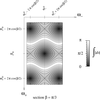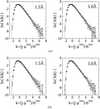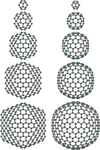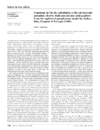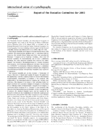issue contents
March 2007 issue

Cover illustration: The molecular form of the guanosine-5'-phosphate tetramer [Zimmerman (1976). J. Mol. Biol. 106, 663-672] has vertices at points of a cubic lattice with parameter a defined by the distance of O6 from the centre. The height is H = 2a and the basis a square scaled by a factor 6 from the central hole. Another square, scaled by 3![[square root]](/logos/entities/radic_rmgif.gif) 2 and turned by 45°, separates phosphates and bases. The indices of the molecular forms are indicated. Courtesy of A. Janner.
2 and turned by 45°, separates phosphates and bases. The indices of the molecular forms are indicated. Courtesy of A. Janner.
lead articles
 access
accessresearch papers
 access
accessletters to the editor


international union of crystallography



 journal menu
journal menu












